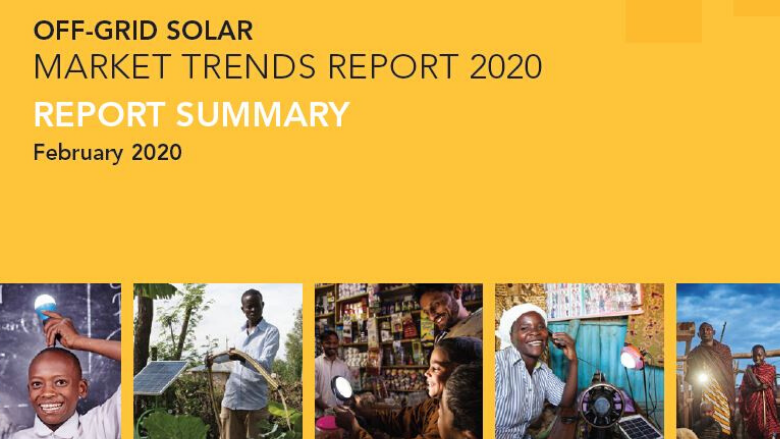, which face some of the world’s biggest gaps in energy access rates. Policymakers, private investors and end users alike have embraced off-grid solar products as an affordable and sustainable solution for electricity access, as productive use appliances for irrigation, cooling and refrigeration have helped provide a source of income for households across the agricultural, industrial, commercial, and public sectors.
The industry holds great promise, having reached 420 million users around the world over the past ten years and with the potential for continued growth. Still, even today.
The 2020 edition of the Off-Grid Solar Market Trends Report is the sixth in a series of biennial reports that was launched in 2010, with the aim of measuring the pulse of the off- grid solar market. This latest edition includes the most comprehensive sales and impact data available, in-depth analysis on current market dynamics and an outlook on the future of the industry.
Key takeaways from the report include:
- The off-grid solar sector has grown rapidly over the past decade and is now a $1.75 billion annual market serving 420 million users, with further growth predicted.
- Despite its strong growth trajectory, even more investments are needed for the sector to continue playing a key role in achieving universal access to electricity by 2030.
- In a business-as-usual scenario, the off-grid solar sector will serve 388 million people with the most basic level of electricity access by 2030, but this growth will be insufficient to achieve universal access targets. To sustain the business-as-usual scenario over the next five years, the sector needs $1.7 billion – $2.2 billion in external investments from 2020 to 2024.
- To achieve universal access, the off-grid solar sector would require between $6.6 billion – $11 billion in additional financing. Of this total need, $6.1 -- $7.7 billion will need to come from investments into off-grid solar companies, and up to $3.4 billion represents public subsidies to bridge the affordability gap.
- As the sector matures and productive use of off-grid solar solutions such as solar water pumps, cold storage and other products servicing public institutions become natural expansion areas, companies are increasingly focused on financial sustainability of the sector and the need to demonstrate profitability and increase transparency around operational efficiencies.
About the Market Trends Report
The biennial flagship report is published by the World Bank Group’s Lighting Global Program in cooperation with the Global Off-Grid Lighting Association (GOGLA) with support from the Energy Sector Management Assistant Program (ESMAP). The report an in-depth analysis on current market dynamics, projections for the coming five years, and a blueprint for how actors in this market can compete in a swiftly evolving industry ecosystem.
About Lighting Global
Lighting Global is the World Bank Group’s initiative to rapidly increase access to off-grid solar energy for the 840 million people living without electricity world-wide. Lighting Global – managed by IFC and the World Bank – works with manufacturers, distributors, governments, and other development partners to build and grow the modern off-grid solar energy market. Our programs are funded with support from ESMAP, The Public – Private Infrastructure Advisory Facility (PPIAF), The Netherlands’ Ministry of Foreign Affairs, The Italian Ministry for the Environment, Land, and Sea (IMELS), and the IKEA Foundation.

